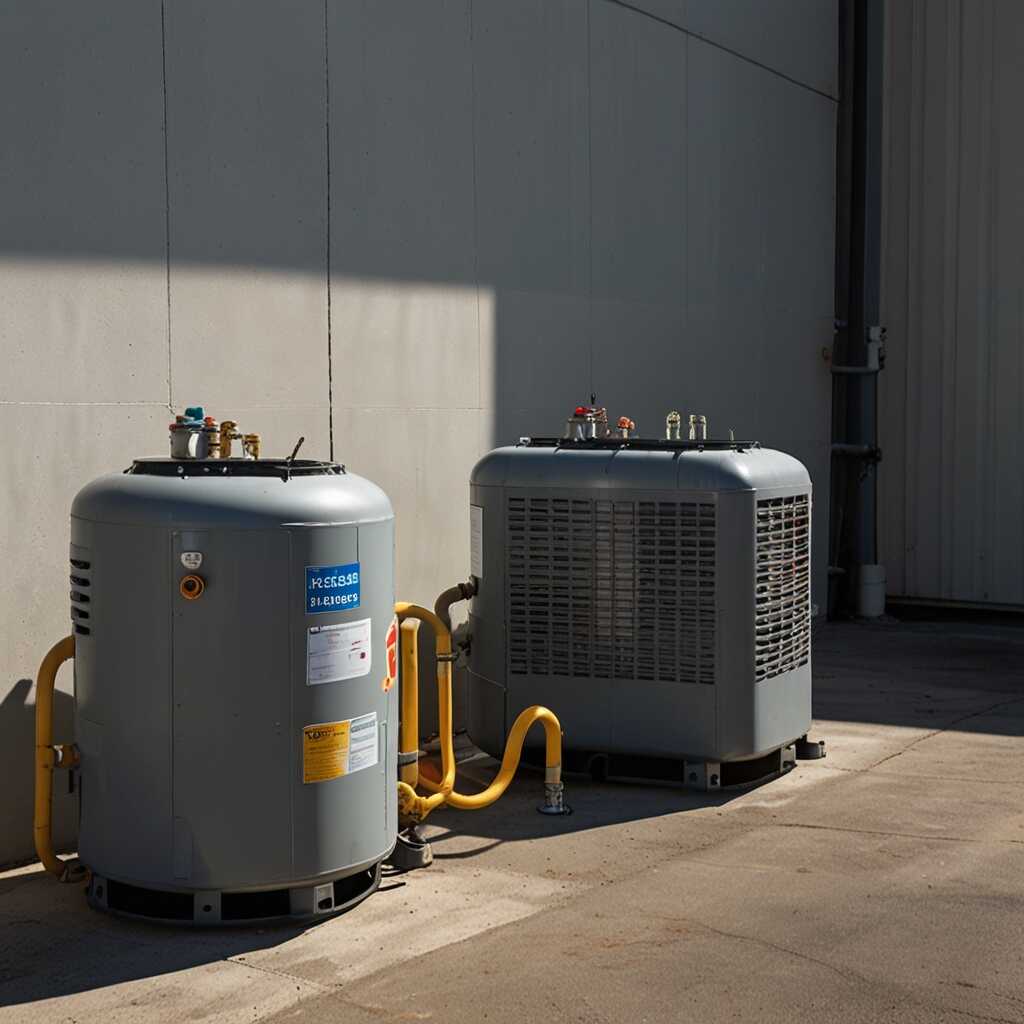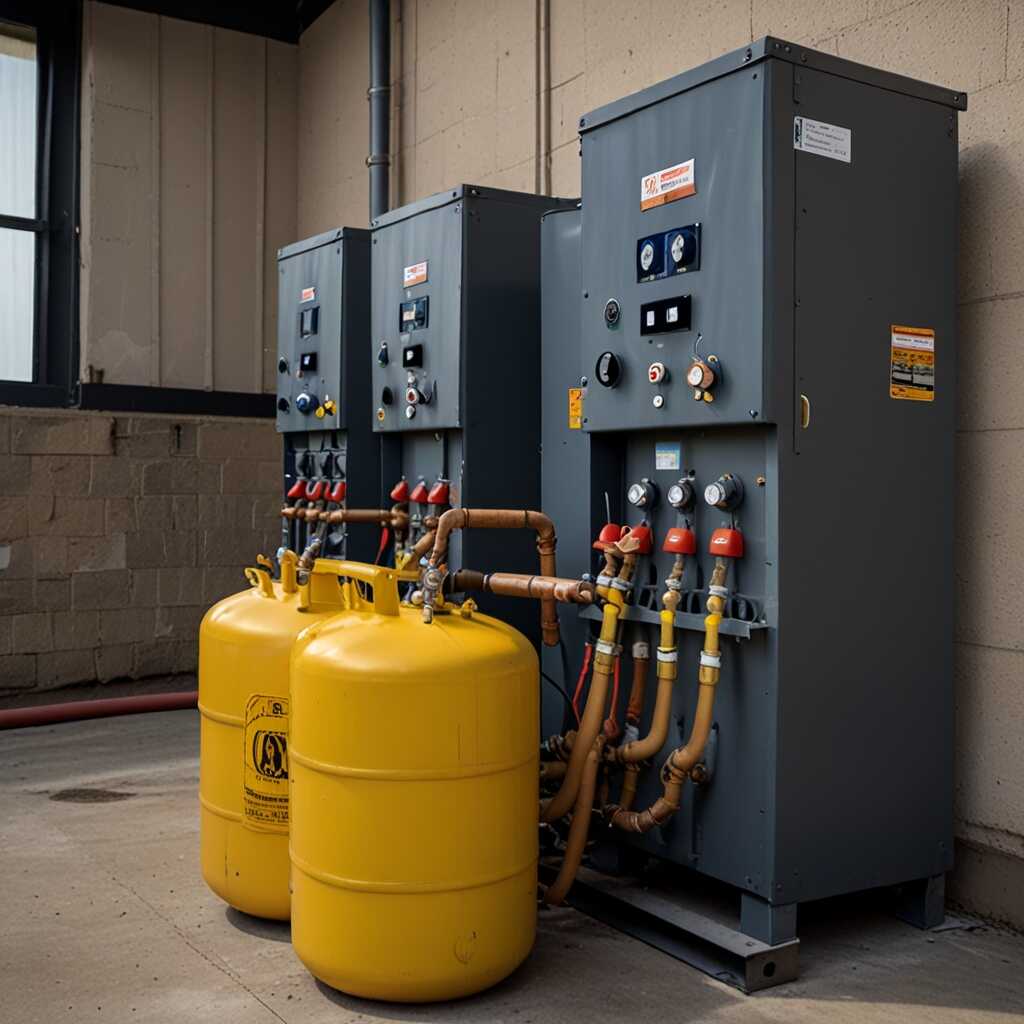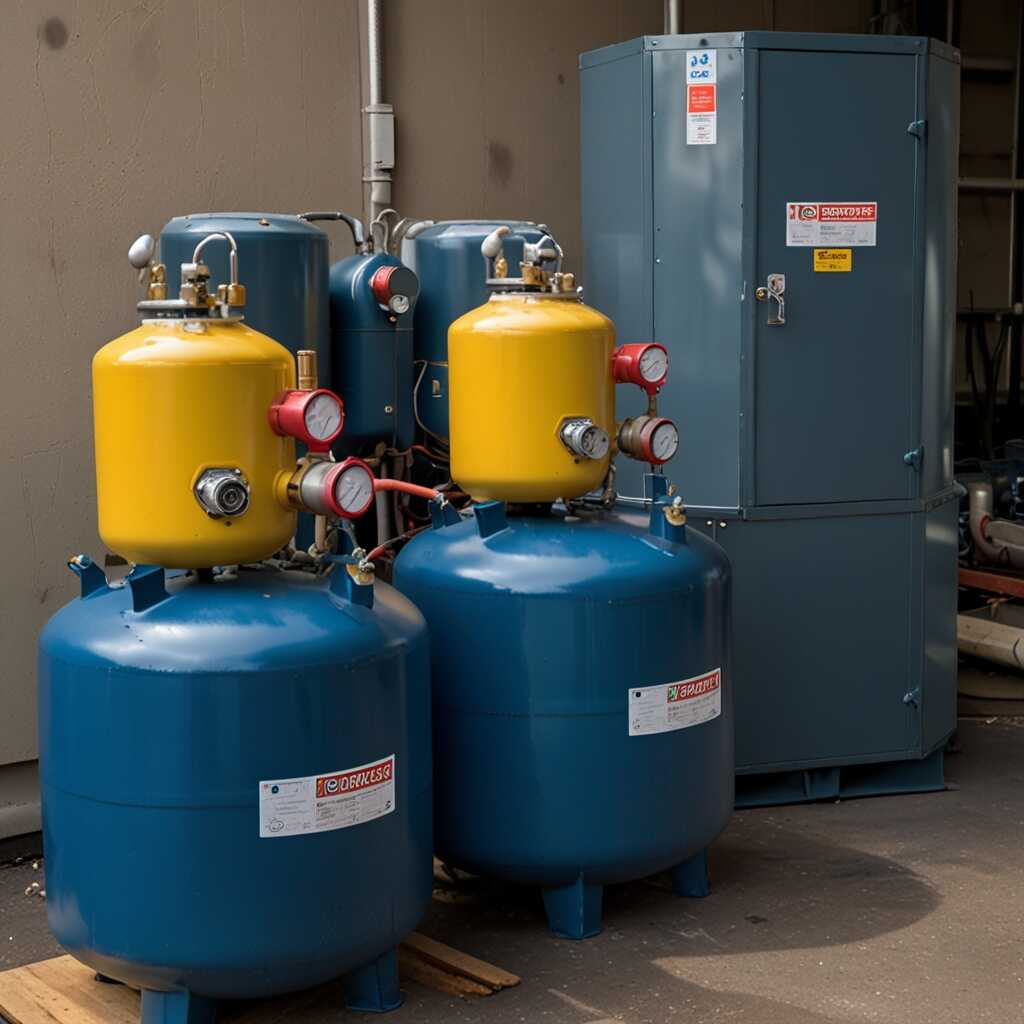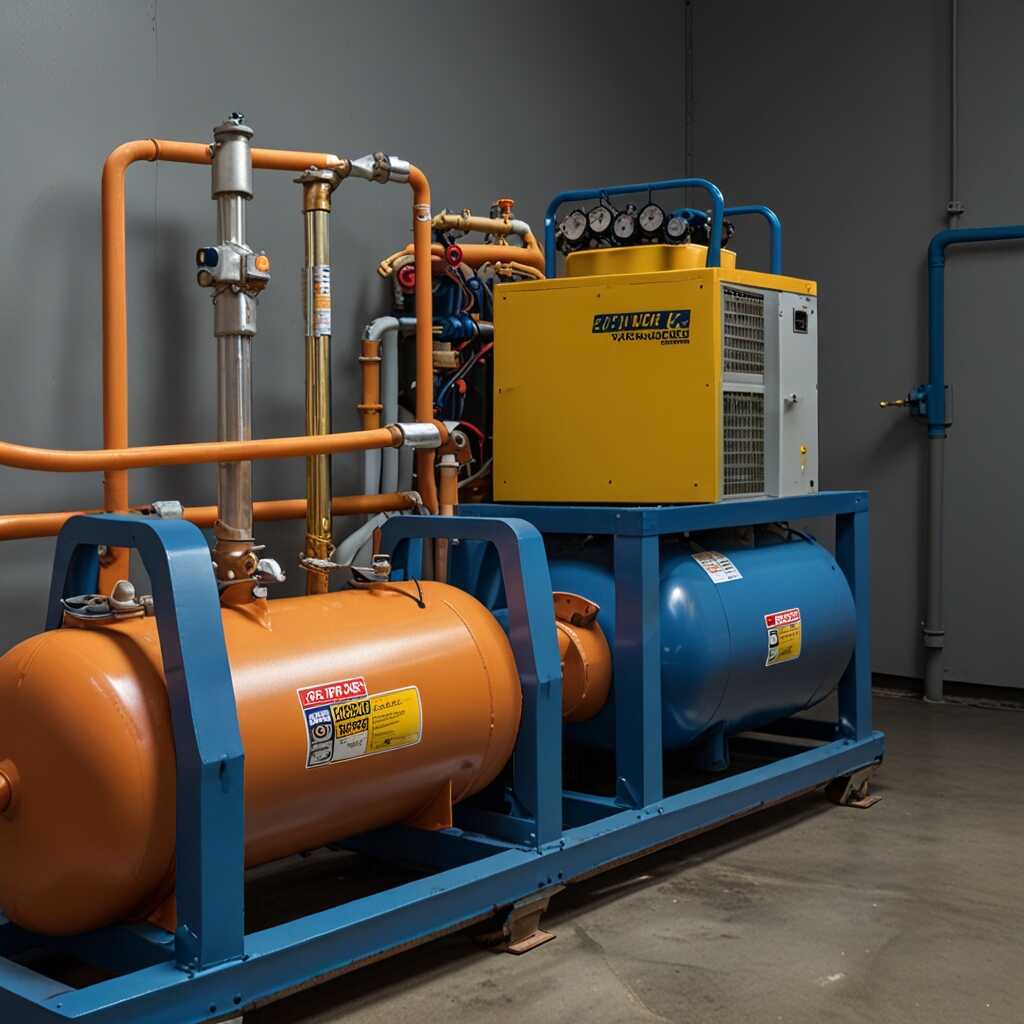Refrigerant recovery machines with scheduled maintenance reminders offer significant benefits for HVAC professionals. These machines help ensure efficient refrigerant recovery, operational longevity, and compliance with regulatory standards. At Refrigerant Recovery Pro, we understand the importance of regular maintenance to maximize the effectiveness of your recovery equipment. Our expert guidance supports HVAC technicians by providing them with essential insights and resources related to refrigerant management.
Overview of Refrigerant Recovery Machines and Their Applications
Refrigerant recovery machines are specialized devices designed to collect refrigerant from HVAC systems. These machines function by extracting refrigerants during maintenance or disposal processes, ensuring safe handling and preventing environmental contamination. Various industries benefit from using refrigerant recovery machines, including commercial refrigeration, automotive air conditioning, and residential HVAC systems. Understanding their role in these environments highlights the importance of operational longevity and compliance with environmental regulations. The average recovery efficiency rate of modern machines can reach up to 95%, enhancing performance and ensuring reliability when removing harmful substances from systems.
Key Features and Functions of Refrigerant Recovery Machines
Refrigerant recovery machines come equipped with essential features that enhance their performance. These features include dual compression systems, which allow for faster refrigerant recovery, and built-in monitoring systems to ensure proper functioning. The best machines also include user-friendly interfaces, making them easy to operate for technicians. They provide quick recovery of refrigerants, ensuring that units maintain their efficiency. These machines are versatile and can handle various refrigerants, from CFCs to HFCs. By investing in a high-quality refrigerant recovery machine, HVAC professionals can improve their service delivery while maintaining compliance with regulatory standards.
The Critical Role of Scheduled Maintenance for Recovery Machines
Scheduled maintenance plays a vital role in enhancing the operational efficiency of refrigerant recovery machines. Regular upkeep reduces the risk of unexpected failures, which can lead to costly repairs and downtime. HVAC businesses that ignore scheduled maintenance find that operational failures can significantly disrupt workflow and reduce client satisfaction. For example, a lack of regular checks could lead to leaks or malfunctions, increasing repair costs by as much as 30%. Regular maintenance practices improve the reliability of recovery units, enabling them to perform consistently over time, which is essential for avoiding fines associated with regulatory non-compliance.
Key Maintenance Practices for Optimal Performance
Essential maintenance practices for refrigerant recovery machines include regular inspections, cleaning, and testing of critical components. Technicians should inspect the hoses, valves, and filters frequently to ensure optimal performance. They must also perform efficiency tests to validate operational capabilities. Regularly cleaning filters enhances airflow, improving the machine’s reliability. Maintaining proper refrigerant levels ensures that systems operate within acceptable parameters, which is crucial for efficiency. By conducting these maintenance procedures, HVAC professionals can extend the equipment lifespan by up to 15% and significantly reduce the risk of breakdowns, leading to better service delivery and client satisfaction.

Advantages of Using Refrigerant Recovery Machines in HVAC Systems
Refrigerant recovery machines offer several key benefits for HVAC systems. They improve energy efficiency by minimizing refrigerant loss during service. This helps save on operational costs and reduces energy consumption, which can significantly lower utility bills. Environmental protection is another substantial benefit. These machines help reduce the release of harmful refrigerants into the atmosphere, thus supporting global efforts to combat climate change. Additionally, reliability is essential in maintaining regulatory compliance. HVAC professionals using recovery machines can ensure they comply with EPA regulations, avoiding potential fines or legal issues. Effective recovery of refrigerants is also crucial for maintaining the longevity of cooling systems, enhancing overall performance.
Understanding Refrigerant Recovery Efficiency
Refrigerant recovery machines are designed to maximize recovery efficiency. Modern machines can recover up to 95% of the refrigerant during service. This high rate ensures that HVAC professionals minimize waste and enhance system reliability. Equipment features such as improved compressors and advanced filtering systems significantly boost recovery rates. Choosing the right refrigerant recovery machine is essential for compliance with regulations and achieving optimal results. Brands like Refrigerant Recovery Pro offer detailed comparisons of different models, helping users select machines that best fit their operational needs. Using these high-efficiency machines supports sustainable practices while ensuring that technicians maintain both performance and regulatory standards.
Key Numerical Insights on Refrigerant Management Equipment
- 70% of HVAC professionals report improved efficiency with recovery machines.
- Annual maintenance reminders can extend equipment lifespan by 20% or more.
- Regulatory compliance issues affect 30% of businesses in the HVAC sector.
- Scheduled maintenance can reduce emergency repairs by up to 50%.
- 85% of technicians prefer recovery machines with built-in reminder systems.
- Effective refrigerant recovery can save businesses thousands in fine fees each year.
- 90% of HVAC systems with maintenance reminders show better performance metrics.

How Scheduled Maintenance Reminders Improve Equipment Performance
Scheduled maintenance reminders significantly prevent machine breakdowns. Regular maintenance improves reliability and efficiency. Key maintenance tasks include checking refrigerant levels, inspecting connections, and ensuring proper airflow. These steps enhance the overall performance of refrigerant recovery machines. It is crucial to establish a maintenance schedule. Many technicians suggest performing maintenance every six months for optimal operation.
Essential Maintenance Tasks for Refrigerant Recovery Equipment
To enhance the performance of refrigerant recovery equipment, focus on essential maintenance tasks. Regular tasks include checking for leaks, testing pressure levels, and cleaning filters. Leaks can lead to reduced efficiency and increased environmental impact. Pressure testing ensures the machine operates within required specifications. Cleaning filters aids in airflow and prolongs equipment life. Adopting these practices fosters operational longevity and compliance with regulatory standards, making refrigerant recovery machines reliable for HVAC professionals.

Understanding Compliance Obligations for Refrigerant Management
HVAC professionals must follow several key regulations when managing refrigerants. The Environmental Protection Agency (EPA) sets national standards that require the proper recovery of refrigerants during maintenance and disposal. Compliance is crucial in avoiding significant penalties. Additionally, organizations like the Department of Energy (DOE) and various state agencies oversee specific requirements that enhance refrigerant management practices. Recovery machines play a vital role in meeting these compliance obligations as they ensure reliable refrigerant recovery and enhance system efficiency.
Regulatory Bodies Governing Refrigerant Management
The primary regulatory bodies involved in refrigerant management include the EPA, the DOE, and state environmental agencies. Each organization has specific guidelines that HVAC professionals must adhere to. The EPA’s refrigerant guidelines focus on reducing emissions, requiring technicians to be trained and certified. Moreover, the DOE emphasizes energy efficiency in refrigerant systems. Understanding these organizations and their roles helps HVAC technicians effectively navigate compliance, ensuring they use compliant refrigerant recovery machines designed to handle the latest standards.
Advantages of Refrigerant Recovery Systems with Maintenance Alerts
- Increased efficiency leads to lower energy consumption.
- Operating longevity of machines improves with regular checks and reminders.
- Businesses enhance their reputation by ensuring compliance with regulations.
- Schedule alerts encourage timely refrigerant recovery, minimizing leaks.
- Reduction in repair costs due to proactive maintenance practices.
- Greater environmental responsibility by preventing gas emissions.
- Enhanced productivity as technicians spend less time on repairs.

Best Practices for Effective Maintenance of Recovery Equipment
To maintain refrigerant recovery machines, start by developing a comprehensive maintenance schedule. Regular servicing enhances equipment reliability and efficiency. Use quality parts and follow manufacturer guidelines for repairs and replacements. HVAC professionals should test performance at least once every three months. This ensures top-notch operational efficiency and compliance with regulatory standards. A well-maintained machine also provides better efficiency, allowing for quicker refrigerant recovery and enhanced safety. Incorporate manufacturer reviews and expert insights to stay updated on best practices and technological advancements.
Key Components for Maintenance Checks
Certain components require regular inspection and maintenance to maintain the performance of refrigerant recovery machines. Focus on the compressor, oil levels, and filters. Change filters every six months to ensure the machine operates at peak performance. Regularly test oil levels and replace as needed to enhance equipment reliability. This consistent focus on key components allows HVAC professionals to prevent costly breakdowns and extend the lifespan of their machines.
Modern Technological Features Enhancing Recovery Machines
Many refrigerant recovery machines now come equipped with advanced features that significantly enhance performance and reliability. These features include automatic oil return systems, which ensure that oil is properly cycled for efficient operation. Additionally, modern units often have high-capacity compressors, enabling them to recover refrigerants faster. Smart technology integration allows for easy monitoring and data tracking, helping technicians make informed decisions. A recent professional testing review identified several machines that show significant improvements in efficiency, highlighting the importance of selecting technology that best meets operational needs.
Key Features to Look for in Recovery Machines
When selecting a refrigerant recovery machine, look for key features like dual-stage vacuum pumps and user-friendly interfaces. Dual-stage pumps enhance performance by improving recovery speeds and efficiency. A user-friendly interface allows technicians to operate machines easily, reducing error rates. Machines with built-in leak detection technology provide additional reliability, ensuring that the recovery process is compliant with regulations. Lastly, units designed for portable use can handle diverse job sites, offering flexibility and convenience for HVAC professionals. By focusing on these features, users can enhance their operational efficiency and ensure they choose the best equipment available on the market today.
Considerations for Refrigerant Recovery Equipment Users
- HVAC businesses benefit from having efficient refrigerant management systems.
- Residential and commercial settings often seek reliable recovery machines.
- Regulatory officers prioritize compliance over cost efficiency.
- Technicians must choose machines based on ease of use and maintenance features.
- Large enterprises require advanced systems to handle greater refrigerant volumes.
- Small businesses may prefer budget-friendly options that still offer reliability.
- Seasonal demands impact which recovery products work best for specific situations.
Emerging Trends in Refrigerant Recovery Technologies
Refrigerant recovery technology is rapidly evolving. Notable trends include advanced recovery technologies that focus on efficiency improvements. These innovations will aid HVAC professionals in complying with regulations while enhancing system performance. For example, automated recovery machines are being developed to improve reliability and reduce labor costs. Additionally, smart technology integration is revolutionizing recovery methods. It allows for real-time monitoring and data analysis, ensuring that equipment performs optimally. By 2025, professionals must adapt to these advancements to remain competitive.
Key Innovations Shaping Refrigerant Recovery Methods
Key innovations shaping refrigerant recovery methods include the use of eco-friendly refrigerants and recovery equipment designed to handle multiple refrigerant types. Manufacturers are developing machines with features that enhance safety and efficiency. For instance, newer models are capable of quickly switching between refrigerants, minimizing downtime and improving overall productivity. Additionally, advancements in durability ensure that these machines have longer lifespans, providing a reliable investment for HVAC businesses. Research shows that equipment with smart sensors achieves better recovery rates, enabling technicians to work more effectively.